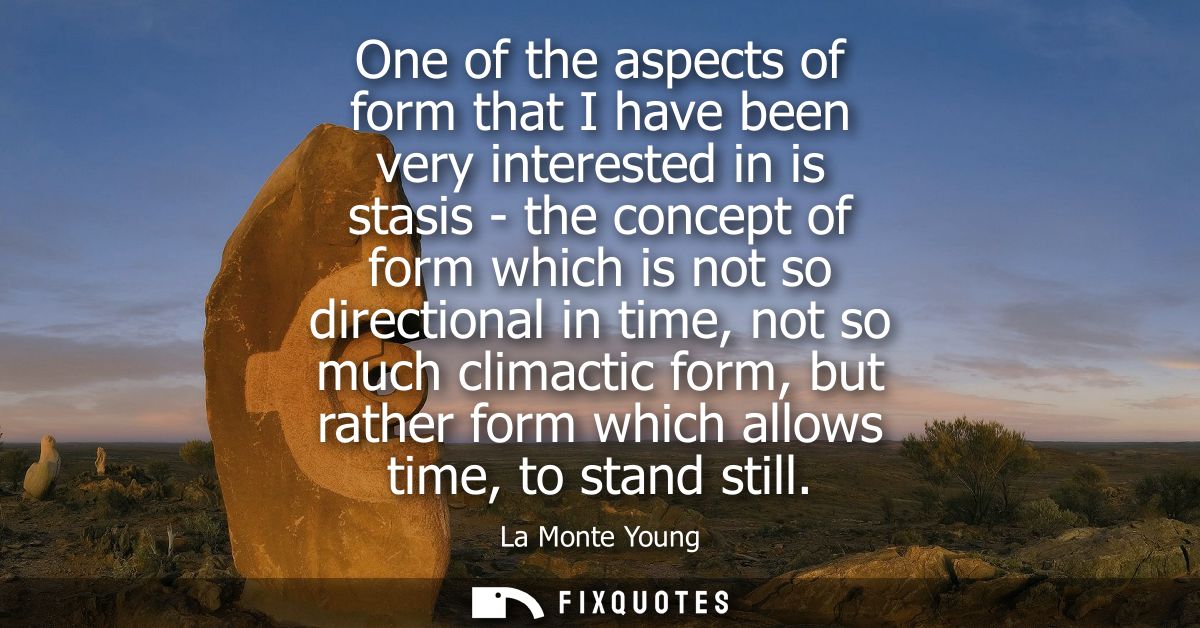"One of the aspects of form that I have been very interested in is stasis - the concept of form which is not so directional in time, not so much climactic form, but rather form which allows time, to stand still"
About this Quote
La Monte Young reflects on the nature of artistic form, emphasizing a departure from traditional notions of progression and climax. Rather than viewing form as a pathway leading inexorably toward a peak or resolution, he is drawn to the idea of stasis, a form that resists forward momentum and instead opens up a different relationship with time. In stasis, time is less about moving from point A to point B and more about remaining in a present moment that feels endless and self-contained.
This engagement with stasis is both aesthetic and philosophical. It invites the listener (or viewer, or reader) to settle into the piece, experiencing it as an environment rather than a journey. In musical contexts, this may manifest as long, sustained tones, drones, or shifts so gradual they become nearly imperceptible. Rather than anticipating what comes next, the audience is encouraged to focus entirely on the now, tuning into subtle variations and textures that might be overlooked in a more dynamic, goal-oriented structure. The experience becomes contemplative, meditative; time itself seems to dilate or even vanish.
Young’s approach challenges expectations set by Western artistic traditions, particularly in music, where compositions often build toward climaxes, resolutions, and narrative arcs. Stasis reevaluates the function of form: it can be expansive rather than linear, opening endless possibility within stillness. This mode also aligns closely with aspects of certain Eastern philosophies and musical traditions, where transcendence and timelessness are valued. In suspending audience expectations of change or conclusion, stasis changes the very nature of attention and perception.
Young’s fascination with stasis prompts a reconsideration of how one experiences form and time in art. It proposes that true engagement may come not from movement, climax, or resolution but from an acceptance and deep exploration of the present, where time’s passage is no longer a requirement for meaning.
About the Author

